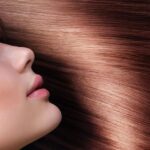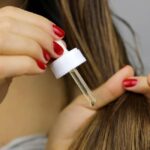Beautiful, shiny, and strong hair is the dream of many people. Weather conditions, improper care, and genetic predispositions can all weaken hair follicles and lead to hair loss. Fortunately, hair tonics (known in Polish as “wcierki”) come to the rescue. These are usually herbal, liquid preparations applied to the scalp with a gentle massage. This product strengthens the hair roots and delivers valuable nutrients that stimulate the growth of healthy hair.
What is a hair tonic?
A hair tonic is a liquid conditioner with a watery consistency. It is applied to the scalp using a spray bottle, syringe, or pipette. Many popular hair tonics are herbal and plant-based blends. The preparation is distributed over the scalp and gently massaged in, which at the same time improves blood circulation.
When to use a hair tonic?
Herbal hair tonics are a must-have on every bathroom shelf, as they are an excellent nourishing cosmetic. You should reach for a hair tonic when you:
- Want to accelerate hair growth,
- Struggle with hair loss,
- Dream of thicker hair,
- Have a dry or oily scalp,
- Want to treat dandruff.
How does a hair tonic work?
Treatment with a hair tonic prevents hair loss, regulates sebaceous gland activity, and accelerates the growth of new, strong hair. There are many preparations on the market today that address all of these needs.
Universal scalp tonics are formulated with herbal and plant extracts along with active ingredients that penetrate deep into the epidermis and reach the hair follicles. As a result, they strengthen and regenerate them.
This happens because the product is massaged into the scalp, stimulating circulation, opening pores, and helping the preparation absorb into the skin. As a result, regular use of a hair tonic brings many benefits:
- Faster growth of new, stronger hair,
- Denser hair,
- Reduction of dandruff,
- Normalized sebaceous gland function,
- Improved hydration,
- Accelerated healing of minor scalp wounds,
- Lifted hair at the roots for more volume.
How to use hair tonics?
A crucial factor in using a hair tonic is regularity. Every product needs time to work. The more consistently you apply it, the sooner you will enjoy visible results. It is best to use hair tonics every day, even on days when you don’t wash your hair. If that’s not possible, apply it before or after each wash.
The duration of treatment depends on individual needs, but should not be shorter than 3–4 weeks. The ingredients need time to take effect. Some results may be noticeable earlier, but hair shedding usually decreases after about 2–3 weeks of regular use. Baby hairs typically appear after at least 4 weeks.
Hair tonics can be applied before washing, after washing, or on dry hair:
– Applied before washing: leave it on for about 2 hours (especially recommended for tonics with plant oils).
– Applied to dry hair: can cause hair to look oilier.
– Applied after washing: use on slightly towel-dried hair, never dripping wet, as the tonic will be diluted and less effective.
– Volumizing tonics: best used daily on dry scalp to lift hair at the roots.
The recommended method is to apply the tonic directly to the scalp with a spray bottle or pump for convenience. If that’s not available, a pipette or needleless syringe can be used. Apply the tonic along the parting and gently massage into the scalp with fingertips.
Why should you use a hair tonic?
The main role of a hair tonic is to restore strong, nourished hair roots. By nourishing follicles and massaging the scalp, circulation is improved. As a result, scalp massage with a tonic stimulates faster hair growth. Hair becomes stronger, healthier, and new baby hairs appear. These preparations are also used to treat hair loss and promote density.
They benefit the scalp by regulating sebum levels, moisturizing, preventing itching, slowing down scalp and hair greasiness, soothing inflammation, reducing irritation, preventing pimples on the scalp, helping treat dandruff, and preventing its recurrence.
Hair tonics – buy or DIY?
Hair tonics for growth and anti-hair loss come in a wide variety of formulas. You can either create your own or use cosmetic brands’ ready-made options. Commercial products come as liquids or masks. If you have more time for hair care, you can prepare your own tonic with individually chosen ingredients tailored to your scalp’s needs.
The simplest tonic is made by applying a lukewarm herbal infusion or birch sap collected in early spring to the scalp. More advanced tonics may involve a mix of herbal infusions with targeted properties, such as anti-inflammatory chamomile combined with anti-dandruff nettle and antiseptic sage.








